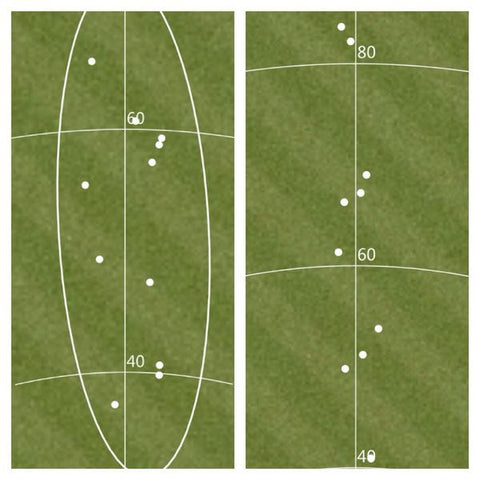Wedge Game Wizardry
The Application of our 3D Research - A case study
Perhaps the most exciting thing about the research study I’m currently undertaking is the practical application of it, here is a case study of a recent pitching lesson which yielded phenomenal results fast.
Issue: Direction and Distance Control
The inability to control distance can be attributed to 3 factors; Face Angle, Shaft Lean & Speed. Strike is a given. This particular player really struggled with directional control primarily which led to difficulty controlling distance.
In all golf shots the club needs to return to the ball after being swung on an incline of some sort, in the wedge game as well as the full swing there are a multitude of ways to make the clubhead move down, out and forwards. All are somewhat unique yet there are enough commonalities to classify these into different ‘styles’.
This players style required a high amount of lead arm rotation to move the clubhead outwards enough to hit the golf ball, this isn’t an issue for me and I wouldn’t attempt to directly change it, especially if it fits in with full swing traits. The problem to be aware of with this style is that the arc the clubhead travels on will be sharper i.e the clubhead path will be changing at a higher rate than other models.
The real problem here though was where the required lead arm rotation came from, as you’ll see in the picture below the lead hand is in a very similar position to address yet the lead elbow isn’t even close. The player is getting the rotation from the lower forearm/wrist and is proving uncontrollable.

I set out to alter the address alignments, bringing the lower forearm and elbow joints into closer but not identical alignment and asked him to think of them as more of a unit. The result of this was a slightly steeper plane angle, which by nature requires a little less lead arm rotation, an added bonus. The first half a dozen balls were small pushes, not a surprise as the lower forearm was much quieter. This then enabled me to increase the amount of shoulder turn on the downswing and straighten out the path that way, more desirable than relying on lead wrist.
Once we had the direction under control we set about reducing the smash factor to somewhere between 1.00 & 1.10, a combination of club choice and club path brought this down nicely and improved the consistency of the smash. Suddenly we had control of both distance and direction.


In summary we identified the players wedge style, the inefficiency in how it was used and fine tuned it into something that worked. Suddenly the magic numbers were far easier to find.

